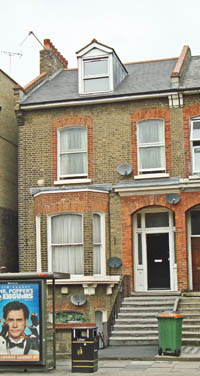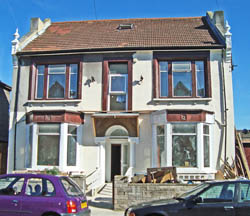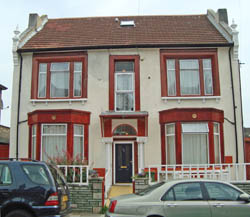Specialist
The Hospital for Natural Healing opened in 1935 as an anti-vivisectionist, anti-vaccination healing centre using botanical medicine. Part of a house in Romford Road had been rented, and this served as a waiting room, a dispensary and a combined consulting a treatment room. The Hospital was financially aided by the Association of Natural Healing, which had hoped to establish its own hospital, but instead donated the funds for this purpose to the Hospital.
The Hospital was staffed by five qualified and experienced unregistered practitioners. The dispensary contained 188 fluid extracts, over 30 tinctures and many crude herbs, powders, ointments and pills. Each patient was regarded as an individual and prescribed for as such.
The premises soon became inadequate and so the whole house was rented. Within the first year of operation, some 2,397 consultations had taken place and 445 patients had received treatment. Of the latter, 44 were discharged cured (although most patients failed to return for a final examination after treatment and confirmation of a cure).
In 1936 a second treatment room opened for chiropractic, osteopathy and certain forms of light treatment, but the increased popularity of the Hospital made it necessary to consider findings larger premises and more staff.
The staff celebrated the Hospital's second birthday with a Dinner held at West Ham Town Hall. It was hoped to establish a School of Reform Medicine, leading to a Diploma in Reform Medicine (DRM).
As none of the practitioners were medically qualified, the Hospital was considered taboo by all the recognised and registered institutions; patients who associated with it were pitied rather than helped. Because the staff were unregistered with the British Medical Association, they were unable to borrow X-rays from other hospitals or to refer patients to them for X-ray examination. This necessitated the use of a private radiologist.
During 1937 some 4,000 consultations had taken placed and some 1,500 patients treated. At the end of the year, the Hospital loved to larger and more suitable premises in Sprowston Road.
The Hospital continued to treat unwell and injured patients during WW2, despite the area being heavily bombed. However, certificates for exemption from Civil Defence duties issued by its staff were not accepted by tribunals, as the practitioners were not members of the British Medical Association or the Medical Practitioners' Union.
The Hospital closed after the war.
Present
status (July 2011)
The building had been used as a student hostel, but since April 2011 was registered as offices for the Hatim House Corporation Ltd. (The company was dissolved in 2012.)

The first location of the Hospital at No. 237 Romford Road.

The final site of the Hospital in Sprowston Road, just around the corner from Romford Road, photographed under refurbishment in October 2010 (above) and completed in July 2011 (below).

Brown PS 1985 The vicissitudes of herbalism in late nineteenth- and early twentieth-century Britain. Medical History 29, 71-92.
http://hansard.millbanksystems.com (February 1943)
http://hansard.millbanksystems.com (April 1943)
Return to home page